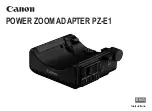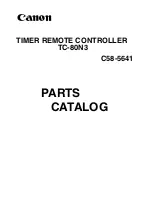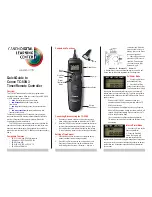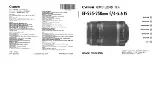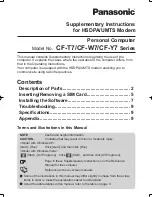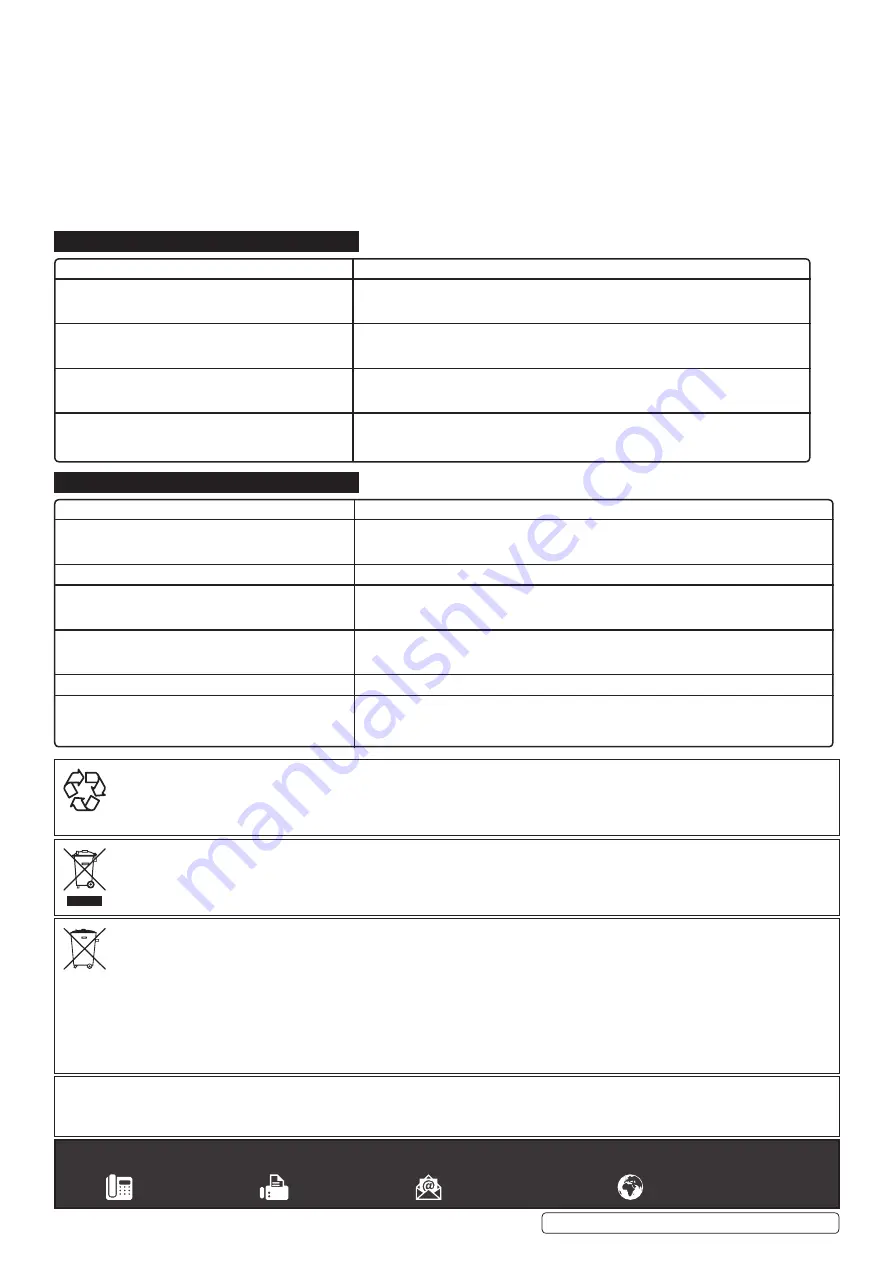
PROBLEM
SOLUTION
Unit works well but no change in light status when
the adaptor is connected to the RoadStart unit.
Possible defective battery or faulty breaker. Use a device such as a light with a dc
plug to check that it works. If the light works, the power source
breaker is serviceable and the battery is defective.
When the adaptor is plugged into the RoadStart unit
all LEDs light. When the adaptor is unplugged and
the test button depressed, no LEDs light.
Roadstart unit battery defective which could have been caused by intense use
without a cool-down period.
Roadstart unit is fully charged but delivers no power.
Check where the wires meets the jaw on the unit clamps. Ensure they are well
crimped.
If the unit has a power switch, ensure that it is in the ON position.
When trying to use an
accessory via the dc outlet, a clicking sound is heard
inside the RoadStart unit.
The accessory is drawing too much
current, resulting in the internal circuit breaker switching between ON and OFF.
5.2.
Alternative Vehicle Power Supply
5.2.1.
When a vehicle battery is disconnected, the memory systems in radios, electronic ignition systems and alarms are frequently lost.
5.2.2.
When replacing a battery the RoadStart unit can be used as an alternative power supply by connecting a dc extension lead (not
supplied) into the vehicle’s accessory socket.
5.2.3.
This will prevent loss of memory in the systems.
WARNING!
The positive battery cable will be live and
MUST
be insulated (e.g. in a heavy duty plastic bag).
5.3.
Multipurpose Power Supply
5.3.1.
These RoadStart units can be used as a multipurpose power supply to power up any equipment with a built-in 12V dc male adaptor.
5.3.2.
The dc outlet on the RoadStart units is equipped with overload protection.
5.3.3.
The twin battery model RS103.V3, when used with an inverter, can operate equipment usually powered by either 110V ac or 230V ac.
NOTE:
The inverter power draw must not exceed 300 Watts.
6. TROUBLESHOOTING
7. QUESTIONS & ANSWERS
QUESTION
ANSWER
How many jump starts can a fully charged RoadStart
do before needing to be recharged?
Between 1 and 20 depending upon operating factors such as temperature,
general condition of the vehicle, engine type and size.
Can the RoadStart be recycled?
Yes, in accordance with national and local authority regulations.
What is the ideal in-use storage temperature of the
RoadStart?
Room temperature. The RoadStart will also operate at temperatures below zero, its
power however will be lessened. Intense heat will activate self-discharge.
I have a regular 10 amp battery charger, can I use it
to recharge the RoadStart?
No. Only the supplied adaptor and charger can be used.
Is the RoadStart fool proof?
No. All jump starting instructions must be followed carefully.
Can I replace the internal batteries?
Yes, but note that the batteries are not covered by warranty as they are consumable
items
RS1.V5 RS102.V4 RS103.V3 Issue 7 (3,4) 29/4/19
Original Language Version
© Jack Sealey Limited
Sealey Group, Kempson Way, Suffolk Business Park, Bury St Edmunds, Suffolk. IP32 7AR
01284 757500
01284 703534
www.sealey.co.uk
ENVIRONMENT PROTECTION
Recycle unwanted materials instead of disposing of them as waste. All tools, accessories and packaging should be sorted, taken to a recycling
centre and disposed of in a manner which is compatible with the environment. When the product becomes completely unserviceable and
requires disposal, drain any fluids (if applicable) into approved containers and dispose of the product and fluids according to local regulations.
WEEE REGULATIONS
Dispose of this product at the end of its working life in compliance with the EU Directive on Waste Electrical and Electronic Equipment
(WEEE). When the product is no longer required, it must be disposed of in an environmentally protective way. Contact your local solid
waste authority for recycling information.
BATTERY REMOVAL
Place the RoadStart unit front side down. Remove all the screws holding the casing together and lift off the back half of the unit.
Disconnect the wires from the two battery terminals, taking care to avoid accidental arcing of the terminals.
Lift the battery out of the casing. Take the battery to a recycling centre that handles sealed, lead-acid batteries.
If there is no recycling centre in the area, contact the local environmental agency for disposal instructions.
Dispose of batteries according to local authority guidelines.
Under the Waste Batteries and Accumulators Regulations 2009, Jack Sealey Ltd are required to inform potential purchasers of products
containing batteries (as defined within these regulations), that they are registered with Valpak’s registered compliance scheme. Jack
Sealey Ltd Batteries Producer Registration Number (BPRN) is BPRN00705.
Note
: It is our policy to continually improve products and as such we reserve the right to alter data, specifications and component parts without prior notice.
Important
: No Liability is accepted for incorrect use of this product.
Warranty
: Guarantee is 12 months from purchase date, proof of which is required for any claim.






